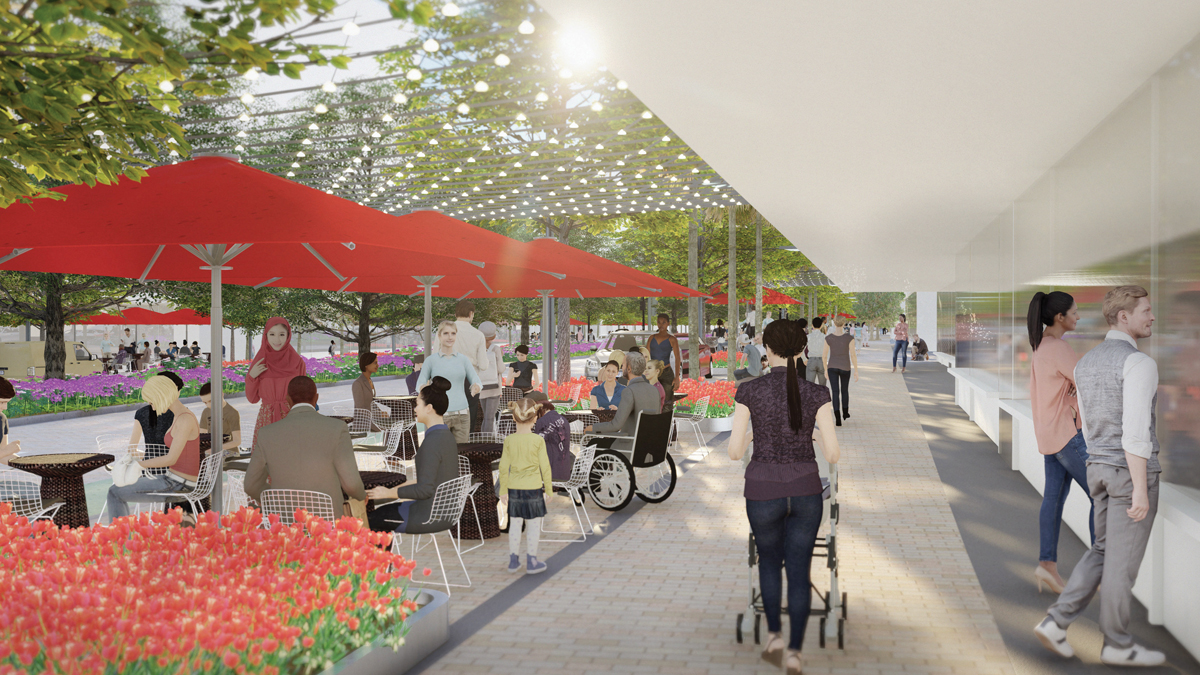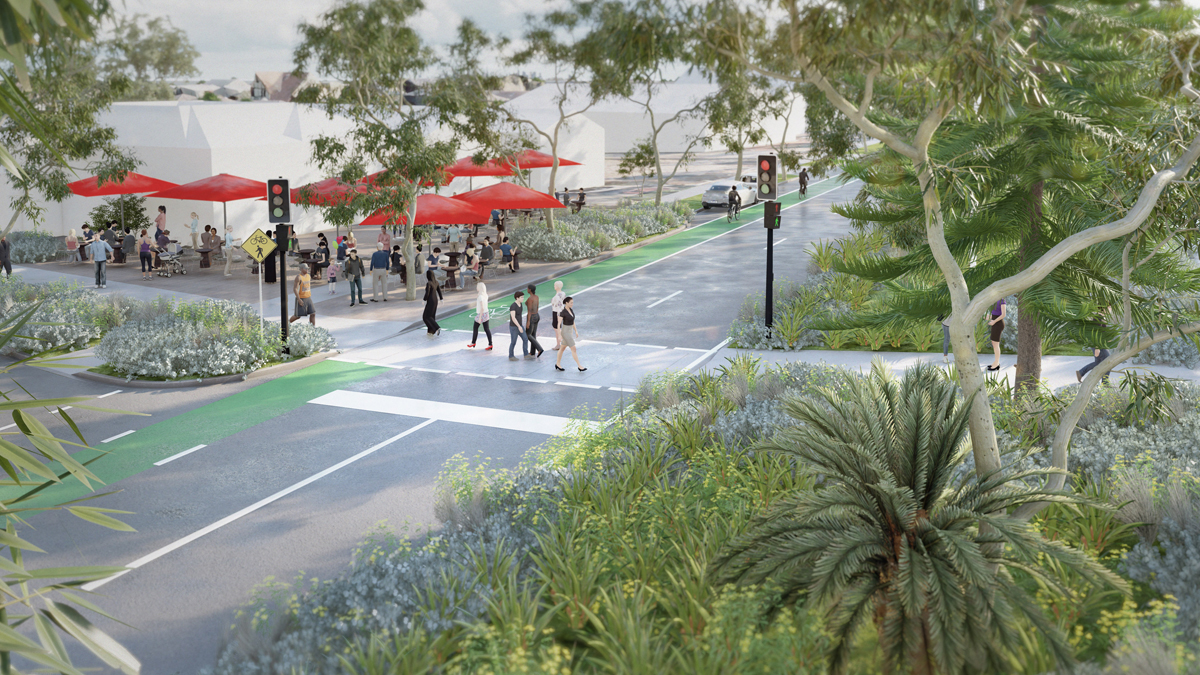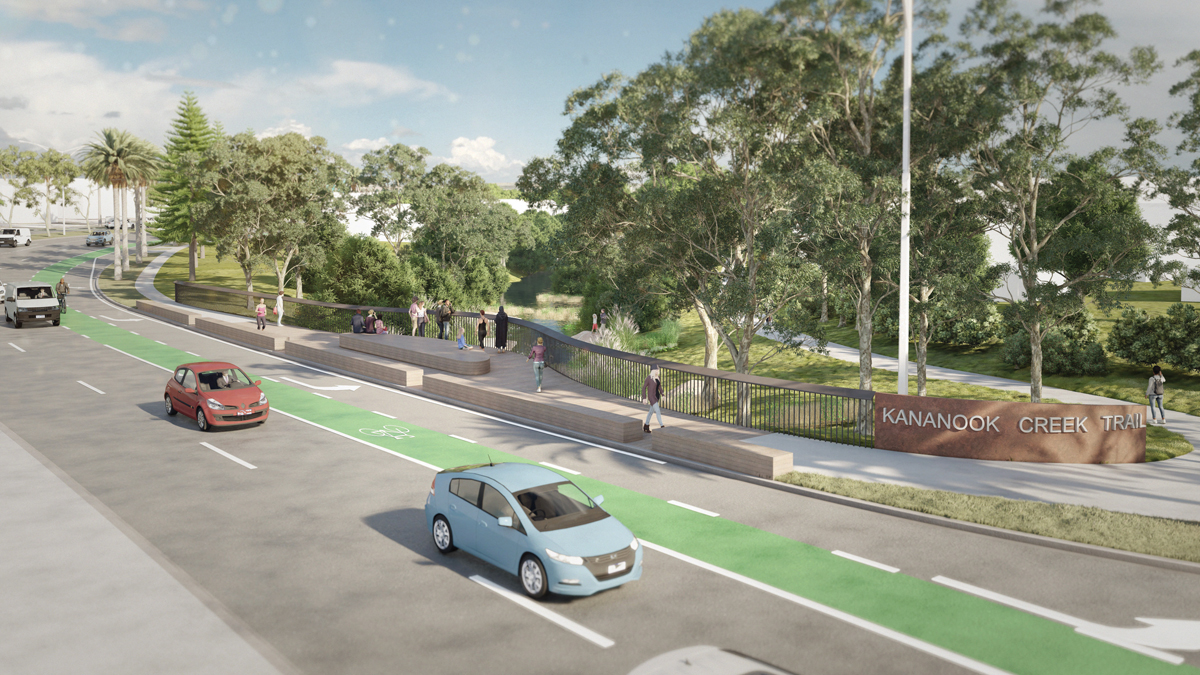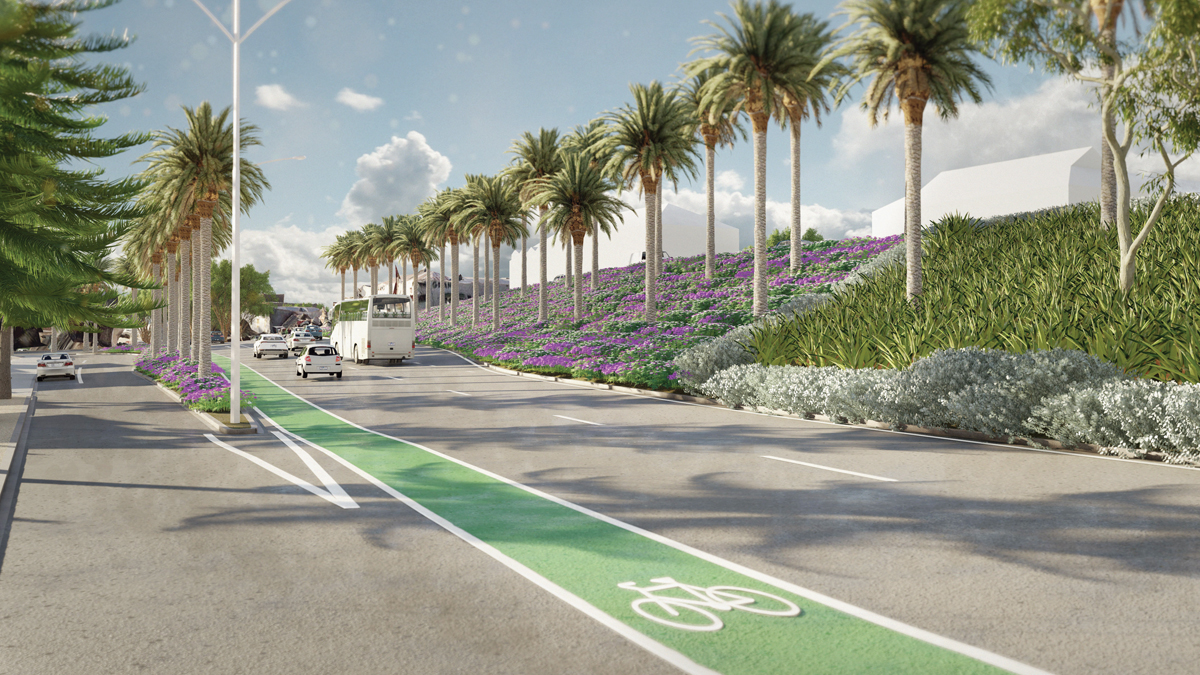A BOLD vision to transform Frankston’s Nepean Highway into an iconic and vibrant boulevard has been unveiled by Frankston City Council.
Mayor Nathan Conroy said the transformation of Nepean Highway has been discussed for many years. “It’s time to get on with the job. Council is focused on delivering the best for residents and visitors with this visionary plan.”
Council has developed a Draft Nepean Boulevard Vision to outline the aspiration for this city-shaping project.
A Master Plan will guide the prioritisation and development of three sections of Nepean Boulevard covering 3.7kms from Mile Bridge through the Frankston Municipal Activity Centre (FMAC) to Olivers Hill.
Mayor Conroy said: “The vision responds to Frankston’s distinctive coastal character that sets it apart from other cities.”
He said the Master Plan will be based on rigorous analysis, a connection to country and community and culminate in a compelling plan that will provide a bold strategic direction for the future development of the Frankston City centre.
Mayor Conroy said highlights of the vision include a reimagined Oliver’s Hill lookout in the south, a revitalised city centre and a northern entry and boulevard.
“The vision identifies the city centre section of the Nepean Highway as a focal point for Frankston’s revitalisation, transforming a car dominated roadway into a new pedestrian friendly destination and a bustling hub of activity and recreation.” he added.
The city centre section will be significantly improved through a rebalancing of the road environment to improve safety and amenity including:
- Connecting the missing link in the existing bike lanes to the north and south.
- Extended outdoor space for retail and pedestrians.
- Enhanced amenity including new public lighting and seating.
- Enhanced biodiversity and tree canopy cover.



Mayor Conroy said the vision outlines the transformation of the Olivers Hill into a world class major visitor destination to celebrate the stunning views of the bay.
To the north, the boulevard will deliver improved connections to Kananook Creek and the Bay. “We know how important Kananook Creek is to the Frankston community and the Nepean Boulevard vision plays a vital role in better connecting our City with the waterway,” Mayor Conroy said.
The approach from the north to Frankston’s city centre along Nepean Boulevard will be enhanced with a range of initiatives including a viewing platform and improved links to the bike trail.
This builds on the strategic direction developed through the Frankston Metropolitan Activity Centre (FMAC) Draft Structure Plan and changes undertaken by the Department of Transport and Planning to create a safe road environment for pedestrians, bike riders and drivers to share the road safely.
Nepean Boulevard represents the key catalyst for Frankston’s revitalisation with unprecedented potential for the City and our community.
Council Director Communities, Angela Hughes, said Nepean Boulevard will:
- Establish a dynamic activated heart to the city.
- Connect the City’s key tourism and community destinations.
- Promote and reflect civic pride.
- Foster new connections between city and Bay.
- Become a catalyst for economic rejuvenation.
- Encourage safe and enjoyable pedestrian use and active transport outcomes.
Ms Hughes added: “The vision has received positive community support as part of the FMAC community engagement program, and will support Council’s Integrated Transport Strategy through improved road safety and transport choices.”
The Master Plan process will commence later this year, and provide extensive opportunity for further community consultation.
For more information, please visit https://engage.frankston.vic.gov.au/nepean-highway-boulevard-corridor


2 Comments
It wouldn’t take much to give the city a facelift, but as usual, they go for a massive overdevelopment and build, build build. There are plenty of shopping and dining options already. It’s all about bringing more residents, tourists and businesses to the area. Enough already!
these will be underwater if staying with current carbon footprint